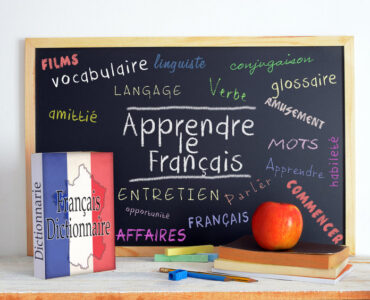Many languages around the world use familiar alphabets, such as Latin or Cyrillic, and not everyone who learns a new language becomes comfortable with the new alphabet. If you are fortunate enough to study a language with a unique alphabet, though, it can be a rewarding and interesting experience. Together with the help of an expert academic essay writer, we will have a look at the world’s 11 most amazing alphabets.
The majority of people who are only familiar with their own writing are unaware that different alphabets have fundamentally distinct functions. The way the Cyrillic or Latin alphabets work is far from universal: for example, in some alphabets, the basic units are graphemes, which represent full ideas or concepts rather than letters, which represent individual vowels and consonants. Other alphabets use syllables as basic units rather than individual sounds, and others are made up of vowel and consonant pairs.
Armenian alphabet
Writing direction: left-to-right.
Number of characters: 38.
Mesrop Mashtots, an Armenian linguist and spiritual leader, created the Armenian alphabet approximately 405 AD. The alphabet originally contained 36 letters, but three more were eventually added. During the Ottoman Empire’s 18th and 19th centuries, the alphabet was widely used, and the Armenian language is a linguistic curiosity: certain of its consonants are not present in other Indo-European languages.
Balinese alphabet
Writing direction: left-to-right.
Number of characters: 47 (33 consonants and 14 vowels).
The Balinese alphabet is part of the abugida writing system, which has as one of its key characteristics that the main units are consonant and vowel pairings with a focus on consonants. The alphabet is known as Aksara Bali and Hanacaraka in Bali, Indonesia, where it is most commonly used. The Balinese alphabet is descended from the Brahmi system and is still used to write Balinese, Old Javanese, and Sanskrit, though the latter two have largely embraced the Latin alphabet.
Despite its similarity to the characters of many other Asian languages, the Balinese alphabet is extraordinarily complex and beautiful. Today, this alphabet is primarily used for religious purposes, such as sacred writings, particularly Hindu manuscripts. It was formerly assumed that the writing itself was sacred and that only those with sufficient spiritual strength could read or even teach it.
Burmese script
Writing direction: left-to-right.
Number of characters: 45 (34 consonants and 11 vowels).
The Burmese alphabet, which is derived from the Brahmi letter, has lovely curves and curls. The alphabet, like other abugidas, dates back at least ten centuries and its letters are simply syllables with “diacritic markings” affixed to consonants to indicate the vowel sound to be employed in a syllable. In written Burmese, there were no spaces between words in the past, but word spacing has become more common in recent years since it makes the text easier to read. The alphabet is made up of circular shapes that are always drawn clockwise, and the reason for this is more functional than aesthetic: the palm leaves on which the letters were traditionally carved tended to tear easily under straight cuts.
Georgian scripts
Writing direction: left-to-right.
Number of characters: 38 in the classical alphabet, 33 in the modern alphabet.
Georgia, which is located between Turkey and Russia, has its own language and alphabet, which have long been threatened by Russian influence. The Georgian script consists of three writing systems: Asomtavruli, Nuskhuri, and Mkhedruli, which are used to write the Georgian language. Despite their differences in appearance, all three systems are single-row, with the same name and alphabetical sequence for their letters. Of the three alphabets, Mkhedruli, once the civil royal script of the Kingdom of Georgia, is now the standard script for modern Georgian and related Kartvelian languages, while Asomtavruli and Nuskhuri are only used by Georgian Orthodox churches in ceremonial religious texts and iconography.
Hebrew alphabet
Writing direction: right-to-left.
Number of characters: 22.
The Abjad alphabet, a descendent of the Imperial Aramaic script, is used to write Hebrew and other Hebrew languages such as Yiddish and Aramaic. Hebrew was written using two separate abjad alphabets in the past. The earliest Hebrew script, Paleo-Hebrew, has mostly been preserved as a form of the Samaritan alphabet. A stylised variant of the Aramaic alphabet, the modern “Hebrew script” is sometimes known as “square writing.” The Hebrew script has no capital letters and only 22 characters, but when five of them are used at the end of a word, they take on different forms. Because the Arabic and Hebrew alphabets are derived from the Aramaic and Paleo-Hebrew alphabets, they have a lot of similarities.
Ogham
Writing direction: top-down, left-to-right.
Number of characters: 25.
Ogham script is a beautiful and distinctive font that most people mistake for artwork rather than an alphabet. Despite this, the alphabet has a Celtic tree-like feel to it, with many of the letters having names that refer to trees and shrubs. Although it is no longer actively employed (save in neopagan ceremonies), the Ogham character was used for recordkeeping in early Irish and Old Irish, and inscriptions may be discovered throughout Ireland and parts of Britain.
Cherokee syllabary
Writing direction: left-to-right.
Number of characters: 86.
The Cherokee alphabet is unique not only in its spelling but also in how it appeared. Unlike most other known styles, it was not created through time, in the distant past, but rather lately, at the turn of the nineteenth century. What’s more incredible is that it was invented by a man named Sequoyah, who had never been able to read before—not just in Cherokee, but in any language. After several unsuccessful attempts, during which he first tried to create a symbol for every word of the Cherokee language and then for every possible concept, he finally created a more practical alphabet with a symbol for each syllable. The symbols are based on those Sequoyah found in European books, but since he could not read them, the relationship between letters and sounds is his own invention, which differs entirely from the original Latin or Greek letters and sounds.
It took Sequoyah about 12 years to complete his alphabet, but it took much less time for it to be accepted by the Cherokee people, despite their initial skepticism and resistance.
Sinhalese alphabet
Writing direction: left-to-right.
Number of characters: 33 in the basic alphabet (21 consonants and 12 vowels), 54 in the expanded alphabet (36 consonants and 18 vowels).
The Sinhalese alphabet is also a descendant of the Brahmi writing family. In religious literature in Sri Lanka, the alphabet is commonly employed to record the Sinhalese language, as well as Sanskrit and Pali. Because the Sinhalese alphabet is made up of two sets of letters, it is frequently referred to as two different alphabets. The basic set of letters is used to write Sinhala words, whereas the expanded set is used to write Pali, Sanskrit, and occasionally English words. Sinhalese is one of the most widely spoken alphabets in the world; it is still taught in Buddhist temples and schools, and it is spoken natively by more than half of Sri Lanka’s 21 million inhabitants.
Mongolian script
Writing direction: top-down, left-to-right.
The Qudum Mongol bičig, or Old Mongolian alphabet, is a beautiful vertical script with different consonants and vowels in each letter. Of course, there are many vertical fonts in the world, but the Mongolian type is particularly lovely and intriguing: the font’s beauty arises from its emphasis on visual harmony, while the intrigue comes from the fact that the shape of the letter varies depending on its position and the letter that follows it.
Geʽez script
Writing direction: left-to-right.
Number of characters: 26.
Ethiopian is a syllabary originally developed to write the ancient Ethiopian language Ge’ez. Geez is currently only used in a few churches for religious events, the most prominent of which are the Ethiopian and Eritrean Orthodox Churches. However, this alphabet was adopted by other languages of Ethiopia and Eritrea, so it is still used quite widely today.
Javanese script
Writing direction: left-to-right.
Number of characters: from 20 to 33.
The Javanese alphabet is closely connected to the Balinese alphabet and is derived from the Brahmi script, thus they have a lot in common: the Javanese script is likewise elaborately adorned and ornamental, and it is used in many Indonesian languages, including Sanskrit. For Old Javanese, the Balinese alphabet is utilized, but for Modern Javanese, the Javanese alphabet is used.
About the Author
Helen Wilson is a professional content writer from essaywritercheap.org company. Her main spheres of specialization are IT and Business. She also studies topics about psychology and health and provides write my essay online for students.





